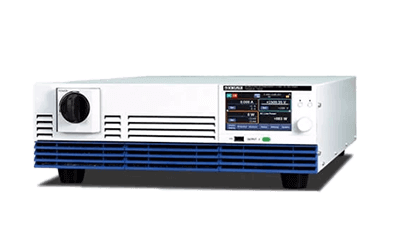What Is a Bidirectional DC Power Supply?

A bidirectional DC power supply is a power device that can supply power in DC and receive power at the same time.
Conventional DC power supplies supply power unidirectionally and cannot control the flow of power in the opposite direction. With bidirectional DC power supply, it is possible to both supply and collect power. It can also flexibly supply and recover power.
As a result, this technology is attracting attention as useful for improving energy efficiency and stabilizing power networks. It is also being used as a power source for electric vehicles.
Uses of Bidirectional DC Power Supplies
Bidirectional DC power supplies are used in a variety of applications. The following are typical applications:
1. Renewable Energy Power Generation Systems
Bidirectional DC power supplies are incorporated into renewable energy power generation systems, such as solar and wind power generation systems. By using bidirectional DC power supply, DC power from renewable energy sources can be efficiently recovered and supplied to the power network.
It may also be applied to microgrids. Microgrids are small-scale power systems. Renewable energy generation, storage batteries, and power conversion equipment are combined to form an independent power system.
2. Automobiles
It is also important for electric vehicle charging infrastructure. DC charging stations use bidirectional DC power supply to charge electric vehicles by supplying power from storage batteries. It is also possible to control the reverse power flow from the storage batteries to supply power to the power network.
3. Other
Bidirectional DC power supply is also used in vehicle infrastructure, such as electric buses and trams. By using bidirectional DC power supply, power supply and recovery of backflow power can be performed efficiently.
It can also be applied to construction machinery. Forklifts and cranes are examples. Since construction machinery is frequently moved and stopped, bidirectional DC power supply can realize efficient operation.
Principle of Bidirectional DC Power Supplies
The components of a bidirectional DC power supply include a power converter and a control system. These devices and systems convert, control, and protect power.
Bidirectional DC power supplies use inverters and converters to convert DC to AC and vice versa. This makes it possible to control power supply and recovery in both directions.
Also important is the control system used to control power supply and recovery. The control system controls the power flow, voltage, and current to achieve the required power supply and recovery. Note that the system is also called a regenerative power source because of the way power is returned to the grid side.
When storage batteries are used, a storage battery management system is also required. Lithium-ion batteries or lead-acid batteries are used as storage batteries. The storage battery management system monitors the charge and discharge status of the storage batteries and controls the supply and recovery of power at appropriate times.
How to Select a Bidirectional DC Power Supply
The following factors exist when selecting a bidirectional DC power supply:
1. Rated Output
The rated output of a bidirectional DC power supply is an important factor in the supply or recovery of the required power. Depending on the magnitude and purpose of the power required, the appropriate power rating should be selected. Power ratings are expressed in watts (W) or kilowatts (kW).
Products with higher power ratings can handle more power. However, they are often more expensive.
2. Output Voltage
The output voltage of a bidirectional DC power supply is selected according to the requirements of the equipment or system to which it is connected. The appropriate output voltage should be selected considering the voltage level required for the equipment or system to operate. Most products are adjustable from a certain voltage range.
3. AC Voltage
When supplying or recovering AC power, an important factor to consider is the AC voltage. The AC voltage to be supplied or recovered must be selected according to the specifications of the power network and equipment to be connected. AC voltage is generally expressed as a combination of frequency (Hz) and voltage (V).
4. Interface
The method of connection and communication with systems and devices is another important factor. Communication protocols, connector types, and control signal transmission methods are related to the interface. Select the appropriate interface considering the compatibility and suitability of the system to be used.